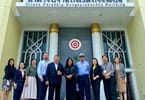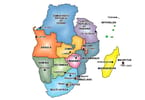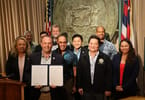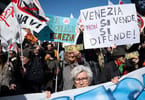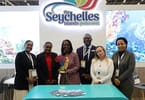In 2013, Ecuador presented to the United Nations its candidacy to serve as the venue of the United Nations Conference on Housing and Sustainable Urban Development: HABITAT III, which will be held in Quito on October 17 to 20, 2016. Thus, a negotiation process began in which Ecuador counted with the support from Latin America and the Caribbean, as well as from the Group of the 77 – comprised by 134 developing countries, Spain and Portugal-. In December 2014, the United Nations General Assembly decided that the venue of the Conference was the Ecuadorian capital, with more than 46.000 delegates.
This meeting takes place every 20 years. Ecuador was designated to host the event on December 2014 by the United Nations General Assembly, after intensive efforts made by the national government through the Ministry of Foreign Affairs and by the organization of the Ministry of Urban Development and Housing, MIDUVI.
The first conference was in 1976 in Vancouver, Canada. On that occasion, the participating governments recognized the need to promote construction of sustainable human settlements. Therefore, the need to meet every 20 years was established.
The second meeting was held in 1996 in Istanbul, Turkey. There, world leaders expressed support for a global plan of action for all human beings to have access to adequate housing.
The focus of this third meeting will be the construction of a New Urban Agenda; in which new challenges for sustainable urban development will be collected. These are policy decisions to be adopted by all the member states of the UN.
The Metropolitan District of Quito (DMQ), capital city of Ecuador, is located in the northern Andes region. It is settled in a heterogeneous territory with a diversity of climatic floors, natural resources and ecosystems, among other aspects. Its urban area is located on a plateau on the right side of Pichincha volcano, at an elevation of 2,800 meters above sea level. DMQ population is of approximately 2’597.989 inhabitants.
Ecuador, with Quito as Habitat III host city, is undergoing has prepared the National Urban Agenda. This base document shall benefit from the National Urban Forums; in these meetings, the country’s position will be defined towards Habitat III. Thus, the National Government aims to boost a sustainable city planning and housing public policy to benefit its citizens.
Locally, Quito has a long tradition of urban and territorial planning strategies’ adoption. Quito has been a pioneer in Latin America in the public mobility transportation processes with the implementation of BRT systems, such as the Trolley bus– means of transportation inaugurated in 1995.
Bicycles are also available for the city inhabitants, and consolidation of public quality and regularization of informal human settlements are offered. In addition, as Quito was the first city declared Cultural Heritage of Humanity by UNESCO, during the last decades special emphasis was placed on the recovery and adequate management of the cultural heritage.
Ecuador provides conference visitors with a diverse and accessible cultural, gastronomic and natural attractions touristic offer. There are also attractive housing options, logistical facilities and transportation.



